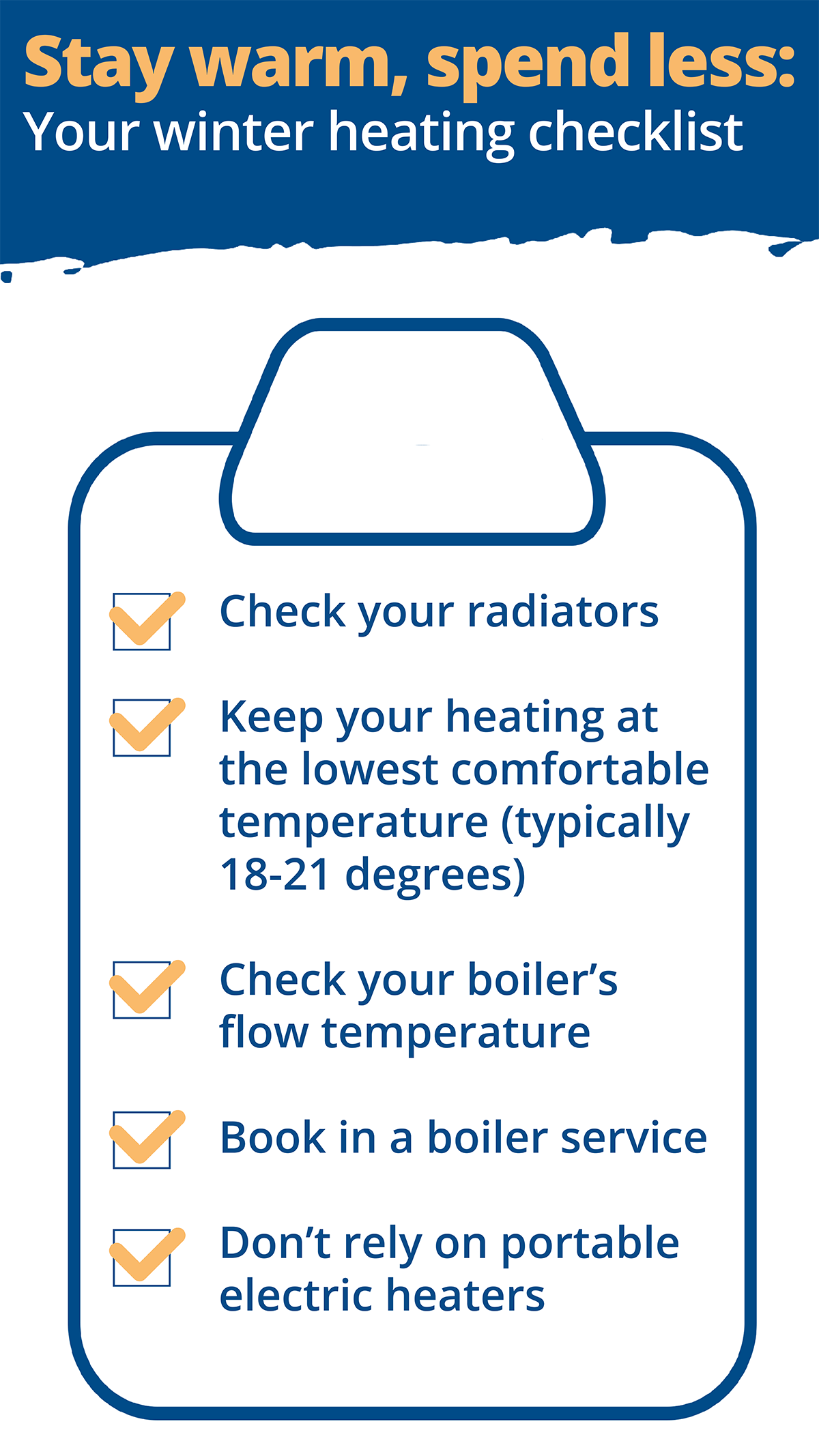Energy Savers Week 2025: Stay warm, spend less
Are you looking for help on how to keep warm for less this winter?
We’ve teamed up with Energy Saving Trust this Energy Savers Week (January 20 - 26 2025) to help you stay warm and spend less on your energy bills with our winter heating checklist.
Throughout the week we’ll be sharing five things you can do at home to help you reduce energy use and save money in the process, by making sure your heating is working as effectively as possible.

Day 1 - Check your radiators
Bleed your radiators - Cold spots caused by trapped air could mean your radiators aren’t giving out as much heat as they should. You can bleed your radiators yourself:
Some radiators have a valve that can be bled using a flathead screwdriver
If the valve has a square spindle with no flathead cutout, you'll need a radiator bleeding key. You can get a radiator key from most DIY shops or online
Please ensure the heating’s off and has had time to cool down before bleeding
You may need to repressurise the system after doing this. You can check your boiler’s user manual for how to do this or check with a heating engineer
Thermostatic radiator valves (TRVs) - the numbers normally correspond to a specific room temperature (e.g. on a scale of 0-5, 5 is typically 30°C), so turning them up to the maximum or minimum could still mean you're over or underheating that room in your property. On a 0-5 scale, 4 is usually okay for rooms that need to keep warm and 2 or 3 is okay for rooms that don't need to be as warm
Day 2 - Check your boiler’s flow temperature
The flow temperature is the temperature of the water your boiler sends to your radiators and hot water cylinder (if you have one)
This is set on the boiler itself - you can check your user manual to find out how to change this. If you're unsure, you can ask a heating engineer to reduce the flow temperature for you
If you have a combi boiler, you could turn it down to 60°C in cold weather. In mild weather you might be able to turn it down as low as 50°C
If you have a boiler with a hot water cylinder, you can turn it down to 65°C. Don't set it any lower otherwise the boiler won't be able to heat your hot water cylinder to a safe temperature
After reducing the flow temperature, your boiler will take longer to heat your home and your hot water (if you have a cylinder). You should set your boiler to come on earlier to give it more time to work
Find out more about your boiler’s flow temperature by watching this video
Turning down your boiler thermostat may not be suitable for all homes, especially if your home is already underheated, or certain heating system types
If your home feels cold or struggles to reach a comfortable temperature, consider other energy-saving measures instead
Day 3 - Keep your heating set at the lowest comfortable temperature (typically 18-21 degrees)
Setting a higher temperature on your room thermostat doesn't make your property warm up any faster but it could waste energy. Set your heating to come on earlier so that it has longer to work; this uses less energy than turning up the thermostat
You should keep your home warm enough so there’s less risk of your home becoming damp and you getting ill. If you have a health condition that might be made worse by the cold, ask your GP or a healthcare professional what temperature you should keep your home at
Day 4 - Book in a boiler service
The last thing you want is to switch your heating on during a cold snap only to find it’s broken down. You should also think about getting a service booked in with a Gas Safe engineer if you haven’t already had a service in a while. This will also ensure it’s working safely and efficiently
Also check if an annual service might be needed to keep your boiler’s warranty valid
Day 5 - Don’t rely on portable electric heaters
Portable heaters are best for short-term use, not as a replacement for your whole house heating system. If you want to heat a single room, it's usually cheaper to use your central heating and adjust the thermostat and TRVs
For more information on how to keep warm and save energy this winter check out both Citizens Advice and Energy Saving Trust social media channels. We have also developed energy advice resources, including energy advice booklets, energy advice leaflets and posters. You can also print out this checklist.
Further tips
For more advice on using less energy at home please see these resources:
For any partners who would like to support Energy Savers Week, our resource pack can be found here.
Last updated: January 2025